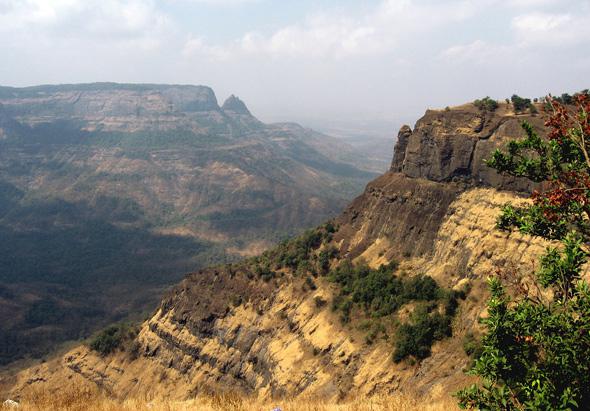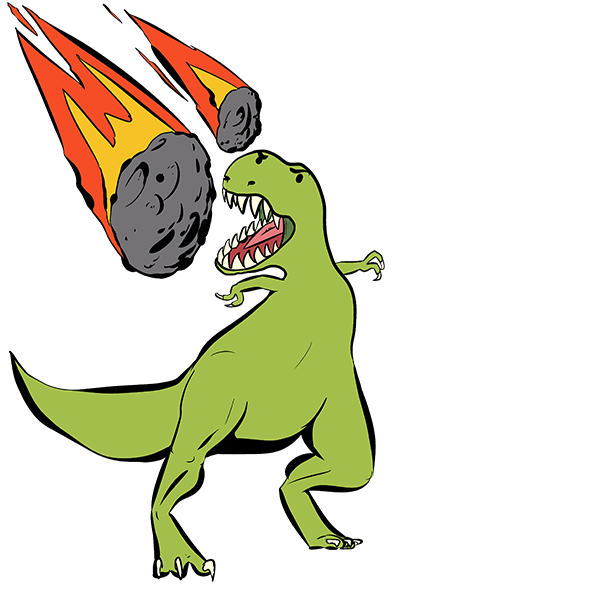When I was a kid, one of the all-time biggest mysteries in science could be summed up simply: What killed the dinosaurs 65-or-so million years ago? And, along with them, fully 75 percent of all plant and animal species on Earth?
In the 1980s, the idea—now widely accepted—was that an asteroid impact did the deed. It would’ve been about 10 kilometers across, and the impact so huge that it would have released the equivalent energy of millions of thermonuclear bombs. The impact event, the tsunami, the earthquakes, and the resulting gigatons of dust thrown into the air caused a massive global ecological disaster. Ejecta from the explosion would have rained down worldwide, causing fires as they re-entered from near-space heights as well. It would’ve made the sweatiest biblical apocalypse look mild by comparison.
But still, scientists have wondered. Not all the pieces fit perfectly. Yes, a crater was found off the Yucatan peninsula that matched the size and age of the impact, but it wasn’t the reality of the impact that was in question. It was the results.
Some scientists have had problems with the timing of the impact, and the damage it did. There was evidence that the extinction took longer than you’d expect from a single, large, explosive event.

Drawing by Stocktrek Images Inc./Alamy
Eyes turned to the Deccan Traps. This is a vast region in India covered in multiple layers of volcanic basalts. They cover half a million square kilometers of area and, most interestingly, were dated to 66 million years ago (though the eruptions occurred over a very long time, millions of years). We know that huge volcanic events can have a profound impact on the environment as well.
Hmmmm. Coincidence? One problem: The eruption of the Deccan Traps clearly predates the extinction event. What role might it have played?
No one has really been sure. But now a team of scientists thinks they have the key to the whole thing: It was both.
They examined the rocks in the Deccan flows and using ratios of radioactive isotopes have obtained the most accurate dating for the volcanic event yet. Yes, the flows predated the impact, but right around the time the asteroid hit, the flows increased prodigiously.

Photo by wikipedian Nichalp, used under the CC-BY-SA 2.5 license.
Their idea is that the asteroid impact deposited so much energy into the Earth’s crust that it affected the Deccan Traps, tens of thousands of kilometers away. Basically, the impact may have temporarily increased the ability of magma to flow out through the Traps. It had been slow before the impact, but the impact cleaned the pipes, so to speak, and as much as 70 percent of the main eruption may have occurred in the millennia that followed.
The impact did the main work, but it was the increased volcanic activity that performed the coup de grâce. The gases released into the atmosphere may have delayed the recovery of the Earth’s ecosystem for as long as a half-million years. Not every animal was wiped out, of course—the avian dinosaurs survived to become birds, and small mammals made it through as well, becoming … us.
This idea of a one-two punch is pretty interesting. It answers a lot of questions, but it’s not really proven yet. It’ll be fun to see what arguments it engenders among geologists, biologists, volcanologists, and paleontologists. Scientists love to argue! But it’s because we want to find the truth, whatever it may be.
Personally, I think the idea has merit, and it does fit with a preconception of mine: It’s pretty rare in the Universe for there to be a Single Event that has some great consequences. It’s usually a combination of factors that leads to the complexity of the world we see around us. This isn’t always the case, and I certainly wouldn’t want to be led astray by the idea, but when it comes to the demise of the dinosaurs it’s very well possible that terrestrial and extraterrestrial events conspired to lay them low.
On a personal note: During a TV documentary shoot, I visited the Trinidad Park in Colorado, which has one of the world’s best displays of the iridium layer, a layer of clay with elevated amounts of iridium in it that has been dated to the extinction of the dinosaurs. It was this layer that prompted the idea that an asteroid impact killed the giant beasts. I made a short video of my visit (please excuse the wind noise!) that you may enjoy:
Anyway, this story isn’t over yet. Even though we now have a grasp on the bigger picture, there’s still much to learn. What specifically happened to do so much damage to our blue-green world? What changes were made to the atmosphere, the water, the land? And could something like this happen again?
The dinosaurs weren’t terribly bright and didn’t have science that could allow them to understand what happened to them. We do. We need to learn more about what happened to our distant brethren, because there, but for the grace of astronomy and geology, go we.
